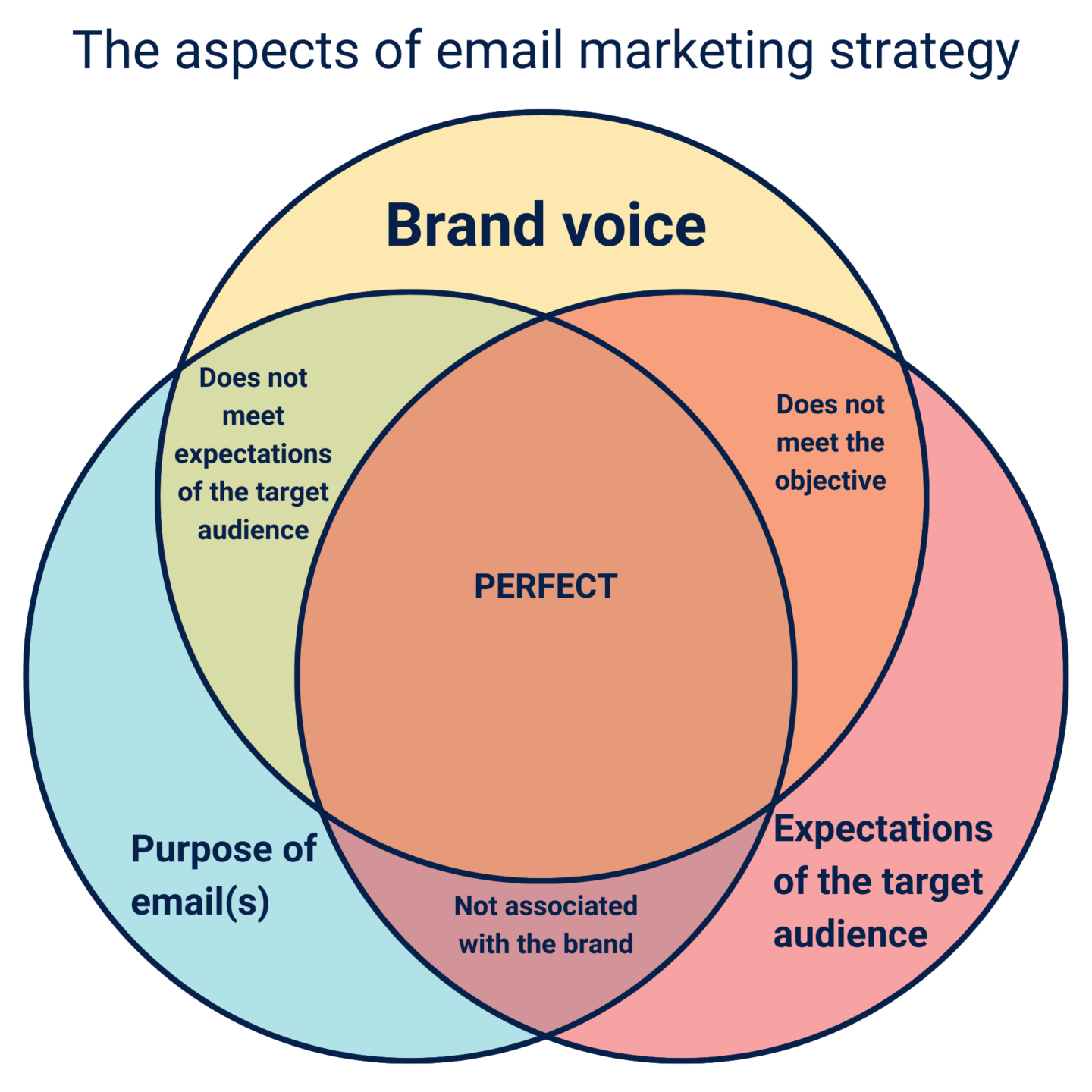Email marketing: how to localise emails?
Email marketing involves sending regular emails to a target audience. These emails may contain product news, discount coupons, advertisements, newsletters, company announcements or other messages. The goal is to encourage the customer to take a specific action.
The broader purpose of email marketing is usually to increase sales, reinforce brand image or simply maintain brand awareness through regular reminders.
If a company operates in multiple markets, then email marketing should also be multilingual. People prefer online stores that are available in their native language. The same applies to newsletters and other emails sent to customers. However, as a customer newsletter is a marketing text – be it an advertisement, company news or messages informing about product updates – simply translating the text is not enough. It also needs to be localised for each target market.
Target market
To succeed in multilingual email marketing, it’s crucial to customise your message for each target market.
Slightly different messages may therefore be needed for different markets. Although the aim is to advertise the same product or service, the same message and visual language may not work equally well in every market because:
- the target audience for a product or service may be different in different markets,
- in different markets, people may have different expectations and needs in terms of both the value proposition and the message,
- different markets may have different requirements for offering (and advertising) the same product or service.
Target audience
A target audience is a group of people with specific characteristics to whom a product or service is offered. There can also be several different target audiences in one market, and the same target audience can exist in several different markets. The best way to get to know your target audience is to carry out a survey, such as an online survey, a focus group survey or an analysis of an industry overview.

What is localisation?
Localisation is the process of translating a text into the language of the target market and adapting the translation to that specific locale. The target market is usually another country, region or area where the translation will be used. Localisation may also be necessary if the customers of a product or service in the same region have different mother tongues. For example, when sending emails to French speakers in Canada, translating the English newsletter into French might not be enough. You might also need to adjust the text to fit the language, culture and preferences of French-speaking readers.
What is transcreation?
Transcreation is a form of translation that involves modifying the text to a larger extent than in the case of localisation. Transcreation aims to adapt text for a new target market, ensuring it meets its purpose just as effectively as the original text.
Transcreation involves identifying the purpose of the source text and writing a new text based on it.
Whether a text needs simply to be translated, or whether localisation or transcreation is necessary, depends on the text itself, its purpose and the market in which it will be used. Here are some important aspects that can be useful when conducting multilingual email marketing, as these can help you to figure out which type of translation service is best suited for a particular target market.

Recipient’s language preference
When sending emails in several languages, the first step is to find out the recipient’s language preference. The most effective way to find out the recipient’s native language is to record their browser data. If the website through which the contact was acquired reads the user’s browser data using navigator.language, the language preference data set in the user’s browser are stored in the email marketing tool or the company’s own server.
Another way to learn about users’ language preferences is by tracking which language version of your website they’ve viewed. For instance, if browser data indicates a user’s native language is Afrikaans, but they’ve read the content in English, it suggests they can also understand messages in the English language. This is helpful if only plan to do email marketing in the most widely spoken languages, rather than every language worldwide.
Sender of the email
The name of the sender is the first thing the recipient notices. The sender’s name and address should be familiar to the recipient; for example, you could use the brand name together with an explanation. The sender’s name and address should remain consistent over time, as this helps the recipient easily recognise emails from the same company. If the email marketing platform enables it, it is also a good idea to use the company logo. For example, many mailboxes display an image next to the name. If you decide to use a real person’s name alongside the brand, like the main contact for the customer, you should switch it to the local contact’s name during localisation.
Subject line
The subject line of the email is of great importance. It depends on the subject line whether the email will be opened or not. A good subject line is about 40 characters long and gives a hint of what the email is about. A misleading subject line is certainly not a good idea.
The best subject line is one that leads to fewer opens and more conversions, rather than more opens and fewer conversions. In the latter case, the number of unsubscribers and spam complaints may increase.
In general, the most effective subject lines in terms of open rate are those that are personal, short and relevant. The personalised part of the subject line, or the placeholder text, should be localised if a case ending or gender identifier needs to be added to it or to the word(s) the placeholder is combined with. For example, in Russian, addressing someone as ‘Dear Mr [first_name]’ or ‘Dear Mrs [first_name]’ requires adding the recipient’s gender marker to the salutation word ‘dear’. Therefore, it’s better to avoid using it.
When localising, it should be noted that the translated subject line tends to be longer, not shorter, than the original. For example, when translating from English into German or French, a 50-character subject line can become a 70-character subject line. It’s also worth noting that emails that have a few longer words in the subject line are more likely to be opened than those with many shorter words in the subject line. Thus, it is usually appropriate to use transcreation when translating the subject line of an email.
Subject lines should always be tested, because what works in one language may not work in another.
Preview text
The preview text is another element that plays a significant role in opening an email.
In a standard email, the preview text shows the beginning of the email, but email marketing platforms enable you to configure the preview text so that it expands or complements the subject line. The length of the preview text depends on the email client and the user’s preferences. In general, it should be less than 90 characters long.
Similarly to localising the subject line, care should be taken when localising the preview text, so that it’s not too long and at the same time complements the subject line. If the subject line has been changed during localisation in order to meet the expectations of the target audience in the foreign market, the preview text should also be changed.

Email content
Indeed, sometimes it is enough to simply translate the content of an email, but more often than not, the content still needs to be localised. The following aspects need attention.
- Addressing
Different markets use different forms of politeness. The choice of the tone of address depends on brand values, as well as market conventions. For example, ‘Dear John Smith’ gives the whole email a very different tone than ‘Hey, you!’. In Finnish, it is customary to address the reader using the informal ‘you’, whereas in Russian, the recipient of the email should almost always be addressed using the formal ‘you’.
- Placeholder texts
Placeholder texts are, for example, [first_name], [company_name], [site_name], etc, which the email platform will replace with the recipient’s details to make the email as personal as possible. If a language has gender and inflections, it may be necessary to add a case ending to it or a gender identifier to the word(s) the placeholder is combined with, depending on the location of the placeholder text in the sentence. Therefore, sending personalised emails to customers in numerous markets may require a lot of work. To make the work less complicated, the email can be localised in such a way that it is not necessary to add a case ending to the placeholder text or a gender identifier to the word(s) it is combined with.
- Calls-to-action
A call-to-action (CTA) is usually the text of a button or link that aims to bring the customer one step closer to a transaction. A call-to-action button or link can, for example, direct the reader to the company’s website or online store, invite them to read a press release or place an order etc. The text of the call-to-action should be localised so that it is not too long and is in line with practices in the particular market. It is best to keep it down to a few words, such as ‘Read more’, ‘Explore products’ or ‘Get a gift for a friend’. The number of characters in the call-to-action in the target language must be the same as in the source language, so that the general layout of the email is retained. The text also needs to be in line with practices in the target market, which means that a direct translation may not be suitable and the text needs to be adapted.
- Emoticons
Emoticons used in emails can have different meanings in different markets and also for different generations of readers. Therefore, it is wise to avoid using hand signs, as the same hand sign can have different connotations in Western, Arab and South American cultures. For example, the ‘thumbs up’ symbol, which is widely used in Western culture to signify approval or liking (eg on Facebook), is offensive in North Africa and Arab countries. Therefore, if the newsletter targets readers in both Western Europe and Dubai, it makes sense to use a different symbol, such as a heart. It is not recommended to use emoticons at all in B2B emails.
- Discount codes
Discount codes need to be translated and usually also localised.
- Reading direction
For languages that are read from right to left (for example, Arabic, Hebrew and Urdu), the design of the body of the letter should be reversed (mirrored). Buttons, however, should better be placed in the middle of the content or made larger, so that the button extends from one side of the content to the other. There is no point in moving the buttons that were originally on the right side to the left, because the right-to-left reader will still use their right hand to click them.
Remember that newsletters are skimmed in an F-shaped pattern, not read from top to bottom.
Images and design
Different email clients display fonts, emoticons, gif files, CSS code, videos, etc differently. In addition, some email clients do not download images contained in the email. Therefore, the most important part of the email (the main message, call-to-action, etc) should be readable and functional, regardless of which email client the reader is using and whether or not images are displayed.
When conducting email marketing in very different markets, prefer images that depict objects and symbols, not people. Metaphorical and ambiguous photos should also be excluded from the visual language, as their meaning can be very different in different markets. It is also better to avoid using images of religious objects, politicians and products with limited availability (such as alcohol).
The rule of thumb is: for B2B, use more text for advertising products and services, and for B2C, use more images.
In Scandinavia, for example, a minimalist, calm design in pastel tones inspires confidence, but in some other markets it may seem too simple, as if something were missing. In order to make the design of the newsletter equally appealing to Spaniards and Finns, already take this into account when designing the layout of the newsletter or create different templates for different markets.

Also remember that up to 30% of readers will view the email in dark mode.
Scheduling the emails
Different sending times work for different markets. This is closely related to the profile and behaviour of the target audience. The most appropriate sending time can only be determined through testing and analysis. When operating in several markets, you also have to take into account different time zones.
Regionally relevant offers
Local festivals and holidays often play a key role in the marketing strategy. For example, 1 January is important in European and American cultures, while in China and other parts of Southeast Asia, Chinese New Year is much more important. In Islamic countries, however, one of the most important holidays is Id al-Fitr, which marks the end of Ramadan. Many holidays celebrated in Europe have no meaning for people in Asia, Africa or South America.
Legislation governing email marketing
In different markets, email marketing is governed by different laws and regulations. When doing email marketing in foreign markets, local legal requirements must be taken into account.
European Union – GDPR
USA – CAN-SPAM
Canada – CASL
Austraalia – Spam Act
China – Measures for the Administration of Internet Email Services
Japan – Act on Regulation of the Transmission of Specified Electronic Mail
Recommendations for email localisation
Successful localisation projects involve cooperation with linguists who live in the target market and speak the target language as their mother tongue. In addition, the localisation team should include a brand ambassador who also lives in the target market and speaks the target language as a native speaker. Involving such a person will help to ensure that the localised content is in line with the brand values and the company’s marketing objectives. When translating customer newsletters and localising emails, use translators who are native speakers of the target language.
1. Create a localisation guide
A localisation guide is a style guide tailored to the target market. The localisation guide should contain all the subsections of the style guide that are relevant to email marketing. The content of the localisation guide should be adapted to the practices and cultural context of the target market, and it should be in line with the brand values. Besides company’s marketing department, it is a good idea to involve linguists living in the target market. The guide should be as short and specific as possible and it should be regularly updated.
2. Measure and analyse your email marketing performance in each market separately
Set key performance indicators (KPIs) and measure and analyse your email marketing results regularly. Use the analysis results for further planning of your email marketing and to improve the localisation guide. You can be satisfied with your email marketing performance if the results are equally good in every market. Until then, email marketing should be constantly improved.
3. Use a localisation partner
Undoubtedly, the organisation’s own employees are the most familiar with its day-to-day operations, communication and the products and services it offers. However, an external partner can also draw attention to aspects that are important considering the cultural context, customs and language specificities of the target market. Transly Translation Agency handles email localisation for numerous clients, serving over 60 markets globally.
Over the years, we have gained a wealth of valuable experience that we will gladly use to help you in your business.
